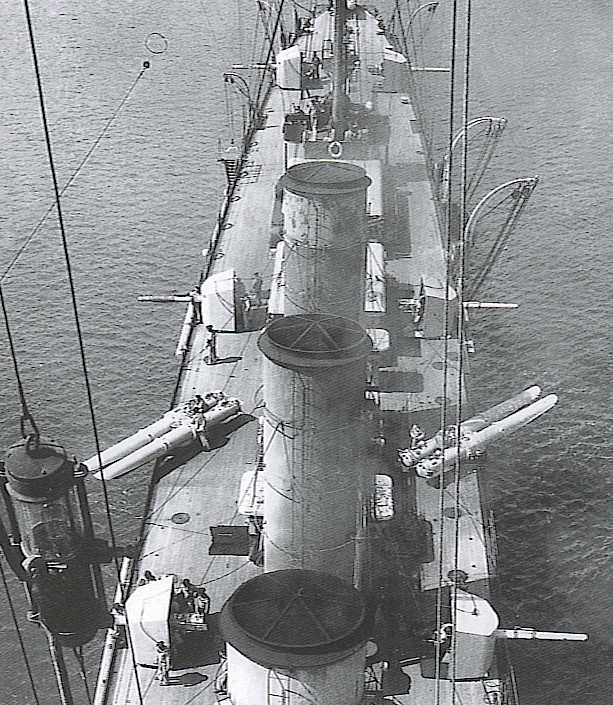|
In 1930 the Soviet Navy purchased 10 twin mounts from Italy which were installed on the light cruisers Chervona Ukraina and Krasny Kavkaz. These were known in Russia as "Minizini" after the mount's designer, Commander Minisini. Sources differ, but these guns or a close variation with a 4" (10.2 cm) bore rather than a 100 mm (3.9") bore were used on the Argentine cruisers of the Veinticinco de Mayo class. Nomenclature note: The lengths of these guns were almost identical, the differences as noted in their designations was strictly the result of the way each nation measured barrel length. See "Definitions and Information about Naval Guns" for further information. |

10 cm/50 guns on Austrian-Hungarian cruiser
SMS Saida
|
| .
|